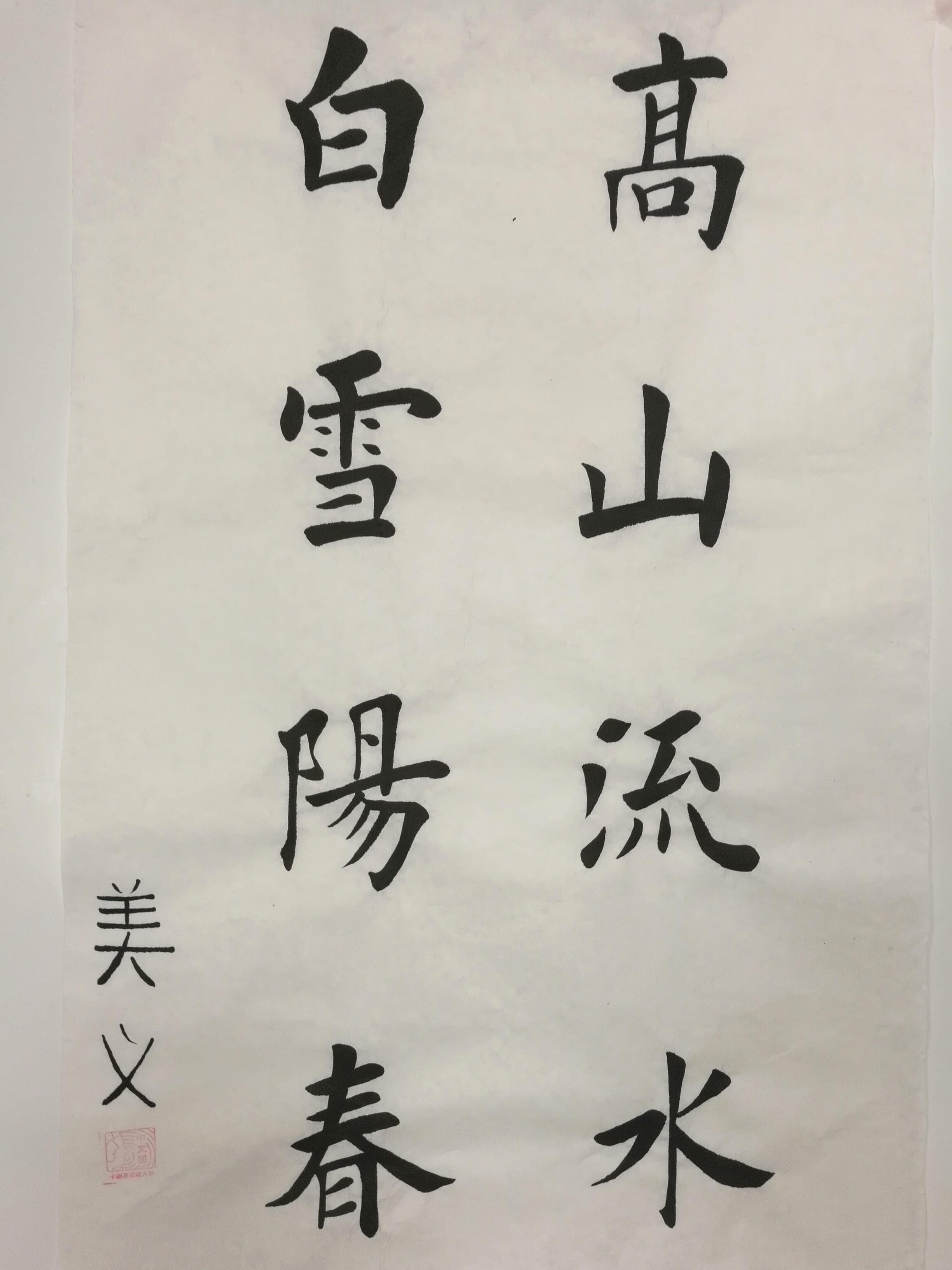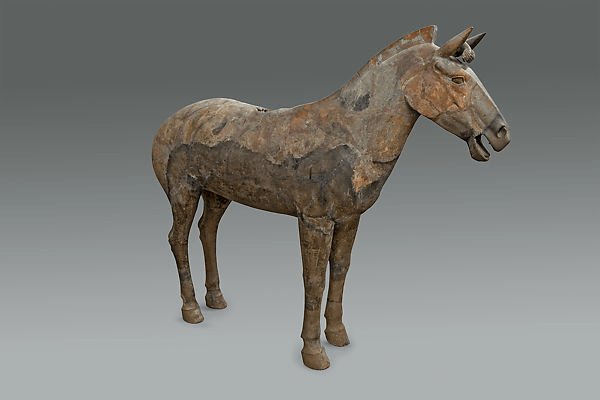High Mountains – A Calligraphy and Reflection
Maitreyee Deshpande
Carnegie Mellon University – Chinese Studies
Calligraphy

Calligraphy by Maitreyee Deshpande
High mountains and flowing water;
White snow and sunny spring.
Self-Reflection Essay
Motivation
I initially signed up for Chinese Calligraphy because I wanted to learn more about the art and the culture of China. I also wanted to make time for a creative activity amidst my difficult and stressful schedule. I have always had a love for art since a young age, but felt as if I did not have the time or resources to pursue a creative hobby. Chinese Calligraphy is an interesting and beautiful art form that I thought would be fulfilling to learn. Not only would I learn the art of calligraphy, but I would also learn of its cultural importance to China, and broaden my knowledge of other Eastern cultures. While looking into this class, I saw the amazing FCE scores, and I have also heard great reviews of the class. Establishing time into my schedule for a relaxing and artistic hobby was a goal of mine for my senior year, which is why I signed up for Chinese Calligraphy.
Peer Learning
The piece of art I chose for this project is called “Horse”. I chose this piece due to its importance in Chinese culture, as well as significance in Chinese art. This piece is a sculpture of a horse made of Earthenware, displayed in The Metropolitan Museum of Art in New York City. “Horse” was created in the Qin dynasty (221 BC - 206 BC). The Qin were known for their expertise in raising horses, which they learned from their nomadic neighbors. Horses were used to pull chariots, and created a force on the battlefield. This horse was one of 32 found in a single pit, along with 8 chariots and 24 charioteers. This horse is heftily built with alert eyes, pointed ears, a well-trimmed mane, and a knotted tail—all characteristics of Qin war horses. As the Chinese artists were exploring different art mediums, many chose to represent real-life experiences, such as war scenes, home life, and more. I chose this piece, Horse, since it reflected a specialty of the Qin dynasty.

Horse, Period: Qin dynasty 221–206 B.C.
Medium: Earthenware,
Museum Collection: The Metropolitan Museum of Art, New York
Link:
https://www.metmuseum.org/art/collection/search/640802?&exhibitionId=%7b5ff35777-f859-45c9-83f6-b029566c47a3%7d&oid=640802&pkgids=423&pg=0&rpp=20&pos=6&ft=*&offset=20
Self-reflection
I have thoroughly enjoyed this class so far. It has been my most creative and relaxing class, all while teaching me a new skill, much different from other skills I have learned in previous classes. I enjoy learning about Chinese history and culture, and have learned so much from both the Professor and my peers’ presentations. I feel grateful to have such an authentic exposure to Chinese art and history, and I think I would not have had this experience in a traditional history class. I love the variety of topics discussed and activities in every class, and I look forward to learning more and relaxing every Tuesday and Thursday. I find this class meditative, and it definitely helps me unwind from my otherwise stressful and hectic week. I definitely hope to pursue Chinese Calligraphy after this class, as I find meaning and importance in this art form. I look forward to practicing calligraphy at home, and I like the tangibility of this art. When I first started in this class, I was unsure about fitting in and being able to learn as much as the other Chinese native students. However, with the Professor’s help and guidance, I feel welcome and appreciated as a student. I have not only seen an improvement in my calligraphy technique, but I have gotten better at being able to unwind and direct my attention to a single activity for a period of time. I have learned so much about Chinese history, art, and culture, and I look forward to learning more for the rest of the semester, and continuing this art form in the future.